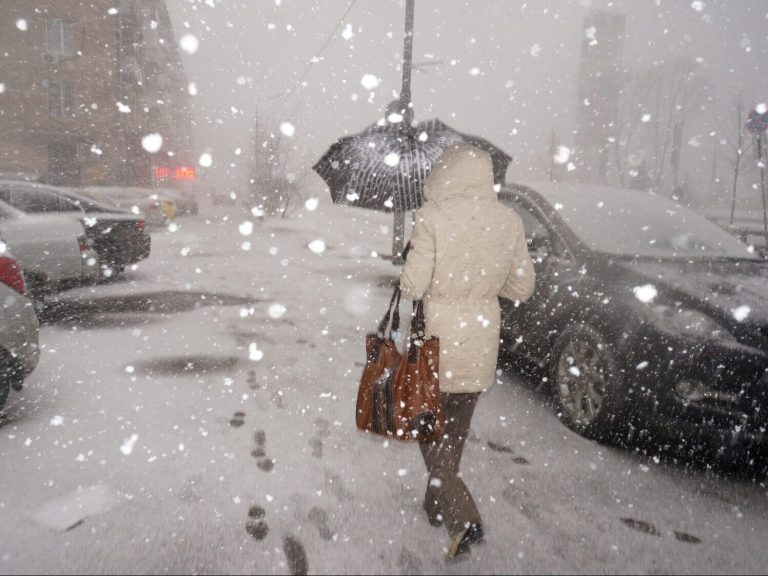I have a thick jacket and I’m shivering from the cold. Expert: “Clothes from chain stores can only look warm”

Even slight cooling of the body leads to colds. Some people cough and sneeze non-stop in the fall and winter and do not associate these symptoms with wearing too light clothes. – The most common products in popular chain stores are products made of acrylic and polyester. They seem thick and warm, but they won’t actually keep us warm, says Aleksandra Włodarczyk, who has been professionally involved in fashion for 18 years.
Aleksandra Zalewska-Stankiewicz, “Wprost”: Almost every year I face a similar situation. I buy a new jacket or coat and I’m freezing. What should we pay attention to when choosing winter clothes?
Aleksandra Włodarczyk: If we want winter clothes that will provide heating but will also breathe and release moisture, we should definitely choose natural fibers. We can choose from sheep wool, merino wool, alpaca wool, angora, mohair or cashmere. Wool has many advantages and it does not have to be thick to keep us warm. It is suitable not only for sweaters, hats and scarves, because, for example, merino wool is used to produce good quality thermal underwear and sportswear. Wool is also used to make coats, jackets, trousers and dresses. High-quality wool is durable, waterproof and even fireproof. I will also add that it is best to use products with the RWS (Responsible Wool Standard) certificate to be sure that the animals are raised in decent conditions and without suffering.
However, wool clothes usually cost more than those from chain stores. For many, this is an insurmountable barrier. Are there any cheaper alternatives?
The most common in popular chain stores are products made of acrylic and polyester. They seem thick and warm, but in fact, not only will they not keep us warm, but most of them will make us sweat. Acrylic and polyester are synthetic fibers made from petroleum. Putting them on each other can be compared to covering yourself with foil on a cold day. Unfortunately, that’s not all. Polyester and acrylic are produced using toxic chemicals, e.g. antimony trioxide or acrylonitrile, which are harmful to the environment and human health. These substances may remain in finished clothing products and pose a threat to our health.
What about products with wool? Maybe this is a way not to spend a fortune and buy clothes that will protect us well against the cold.
For a wool product to fulfill its functions, it must contain 100% or the vast majority of this raw material. Unfortunately, in stores you often see clothes made of acrylic or polyester, possibly with an admixture of 5-15% wool, and such clothes will unfortunately not have the properties we expect. When choosing jackets or coats that will warm our entire body – from the neck, through the chest – to the kidneys, we should look for products that contain at least 80 percent wool. Sometimes it happens that someone is allergic to wool. I would recommend cotton products to such people. They won’t be as hot, but they will be definitely better than synthetics.
What fillings should be in jackets so that our kidneys and other organs are properly protected?
When it comes to jacket fillings, the most natural and warm filling will be down. For people who avoid animal products for ethical reasons, synthetic fillings are available, preferably recycled, but then necessarily with the GRS (Global Recycled Standard) certificate, which ensures that such filling does not contain toxic chemicals.
Finally, I will ask about your blog – Conscious Fashion Consumer, where you write, among others: about the impact of clothes on consumers’ health. You don’t skimp on well-known brands. It is so bad?
My mission is to build public awareness of the impact fashion has on the planet, the people working in the industry and the health of consumers. Today, the fashion system operates in a linear model, in which natural environmental resources are used up on a massive scale, people are exploited for starvation wages, the planet is poisoned with thousands of chemicals, only to then throw away these clothes in the Atacama Desert or on beaches in Africa. .
I have been associated with well-known brands for 16 years. Less than 2 years ago, for ethical reasons, I closed my own agency producing fast fashion for the largest Polish chain stores, so that I could write and speak openly about the behind-the-scenes of the fashion world. Today I am involved in education and projects related to sustainable fashion.






